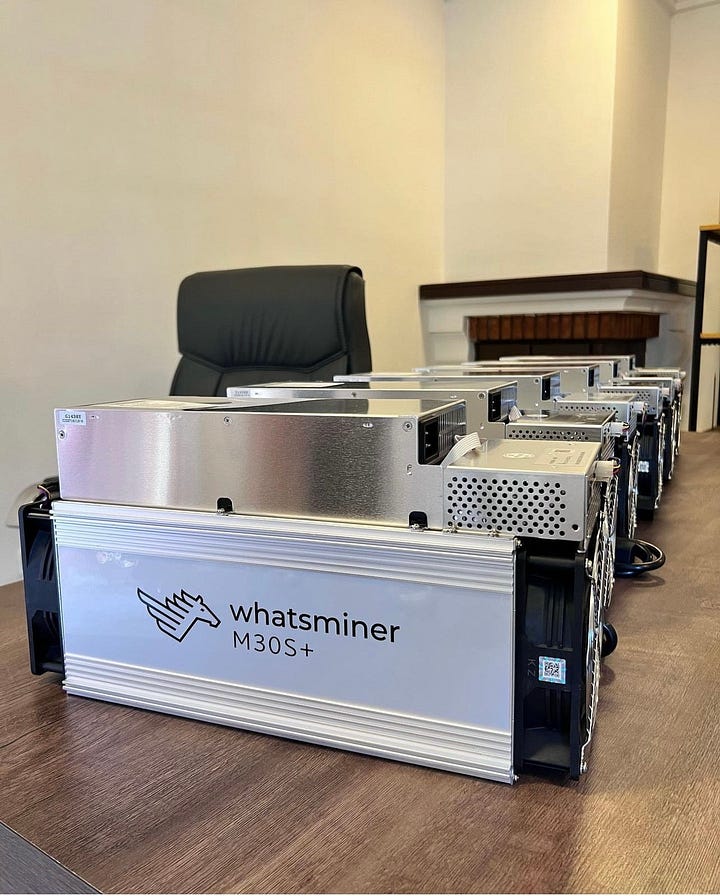Bitcoin Mining Unraveled
How Miners Validate and Secure the Blockchain


In the world of cryptocurrencies, Bitcoin mining stands as a fundamental pillar that ensures the security and functionality of the Bitcoin network. Mining plays a crucial role in validating transactions, securing the blockchain, and minting new Bitcoins. In this article, we will explore the intricate workings of Bitcoin mining and gain insight into the fascinating world of Bitcoin machines.
Understanding Bitcoin Mining: The Backbone of the Network
At its core, Bitcoin mining is the process through which new transactions are added to the blockchain, and new Bitcoins are brought into circulation. It is an intricate and resource-intensive process that requires computational power to solve complex mathematical puzzles. Successful miners are rewarded with newly minted Bitcoins and transaction fees.
Key Components of Bitcoin Mining:
Transactions: Every Bitcoin transaction is broadcast to the network, awaiting confirmation. Miners select these transactions and group them into a "block."
Proof of Work (PoW): This is the cryptographic puzzle that miners must solve for each block. The PoW involves finding a nonce (a random number) that, when hashed along with the block's data, produces a hash that meets specific criteria (e.g., starts with a certain number of leading zeros).
Mining Nodes: Miners use specialized computers known as "mining nodes" or "mining rigs" to participate in the mining process. These machines are equipped with powerful hardware, such as ASICs (Application-Specific Integrated Circuits), to perform the necessary computations efficiently.
Mining Pools: Due to the high computational power required and the competitive nature of mining, individual miners often join mining pools. In a pool, miners combine their resources, share the workload, and split the rewards based on their contributions.
The Mining Process: Step-by-Step
Transaction Selection: Miners choose a selection of pending transactions from the Bitcoin mempool, creating a candidate block.
Hashing: The miner's computer then repeatedly hashes the block's data with different nonces until it finds a valid hash that fulfills the PoW requirements.
Block Addition: Once the valid PoW is found, the new block is propagated to the network, and other nodes verify its validity.
Reward and Consensus: The miner who successfully mined the block is rewarded with a predetermined number of newly minted Bitcoins and transaction fees. The block is then added to the blockchain, and consensus is achieved throughout the network.
Unveiling Bitcoin Machines: Powering the Mining Process
Bitcoin mining machines, also known as mining rigs or ASIC miners, are the workhorses behind the mining process. These machines are specially designed and optimized to perform the complex mathematical calculations required for PoW quickly and efficiently.
ASIC Miners: Application-Specific Integrated Circuit (ASIC) miners are the most common type of Bitcoin mining machines. Unlike general-purpose computers like CPUs and GPUs, ASICs are designed specifically for mining, which gives them a significant advantage in terms of power and energy efficiency.
Mining Farm: Large-scale mining operations often set up mining farms where they house hundreds or thousands of ASIC miners. These farms are strategically located in regions with low electricity costs and favorable climates to maximize profitability.
Challenges and Sustainability:
Bitcoin mining is an energy-intensive process, and concerns have been raised about its environmental impact. However, it's worth noting that as the technology evolves and the mining industry becomes more aware of sustainability, efforts are being made to explore renewable energy sources and optimize energy consumption.
Conclusion
Bitcoin mining forms the backbone of the Bitcoin network, enabling secure and decentralized transactions to take place. The process involves solving complex mathematical puzzles using specialized Bitcoin mining machines. While mining is energy-intensive, it plays a crucial role in maintaining the integrity of the blockchain and rewarding miners for their efforts.
As the Bitcoin ecosystem continues to evolve, mining will remain a central element, ensuring the stability and security of this revolutionary digital currency.
Happy Mining!

